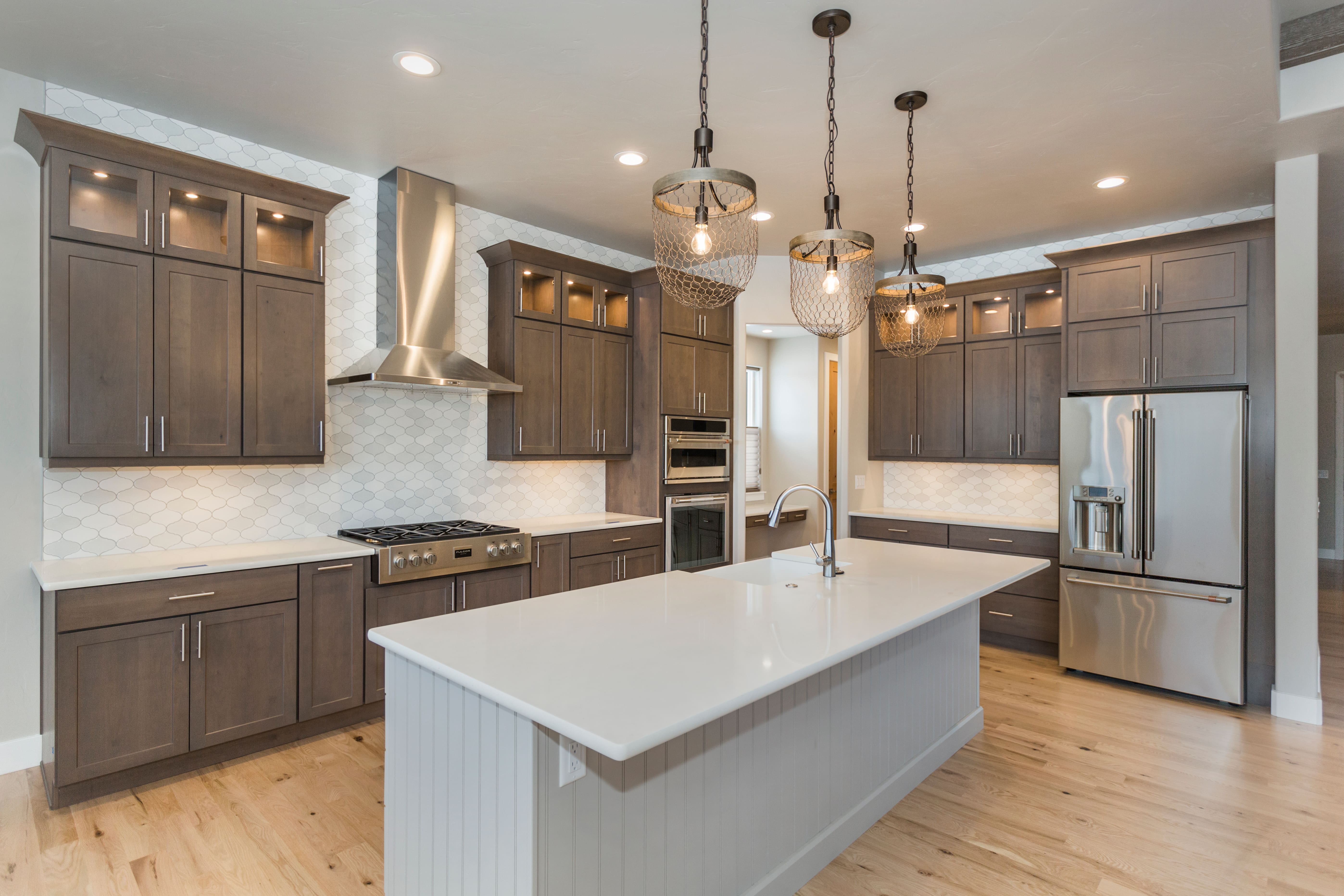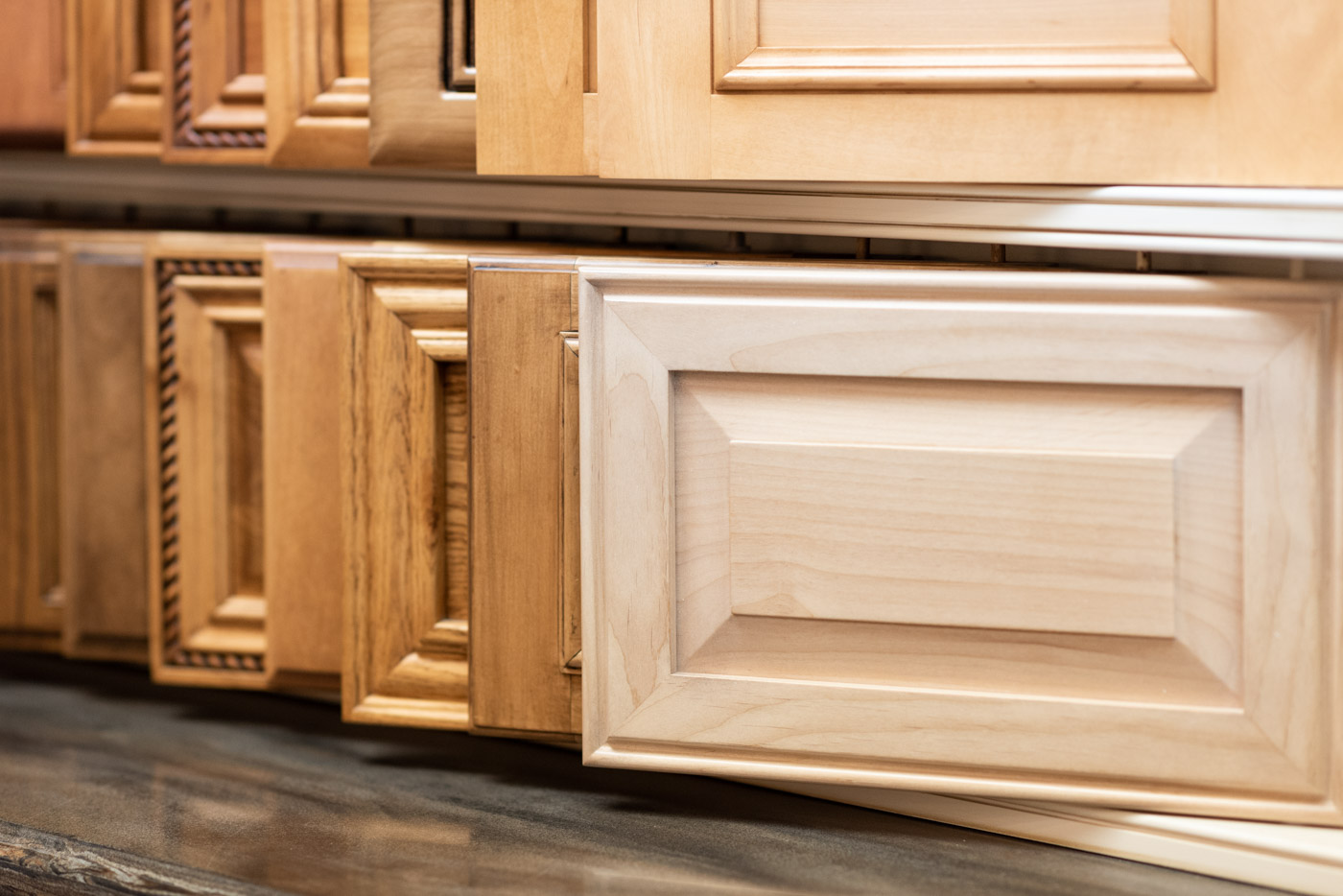Styles and Designs of Pine Raised Panel Cabinet Doors

Pine, with its warm, inviting character, offers a versatile canvas for crafting stunning raised panel cabinet doors. From the rustic charm of a traditional Shaker style to the sleek lines of a modern interpretation, the possibilities are vast and cater to a wide range of aesthetic preferences. The choice of style, coupled with careful selection of stain and finish, can dramatically transform the overall look and feel of your kitchen or bathroom.
Pine Raised Panel Cabinet Door Styles
The inherent workability of pine allows for a diverse array of raised panel door styles. The following table illustrates some of the most popular options, highlighting their key features and visual distinctions.
| Style | Description | Construction Details | Visual Characteristics |
|---|---|---|---|
| Shaker | Characterized by its simple, flat center panel framed by a raised edge. | A relatively straightforward construction; the panel is typically recessed slightly into the frame. | Clean lines, minimalist aesthetic; exudes a sense of understated elegance. The flat center panel provides a smooth, unblemished surface. |
| Raised Panel | Features a central panel that is raised above the surrounding frame. | The panel is carefully fitted and glued into a frame, creating a three-dimensional effect. Variations exist in the depth and shape of the raised panel. | A classic, timeless look; the raised panel adds depth and visual interest. The style can range from subtly elegant to boldly dramatic depending on the panel’s profile. |
| Flat Panel | A simpler design with a flat center panel and a frame. | The panel sits flush with the frame, offering a smooth, uninterrupted surface. | Modern and minimalist; creates a clean, uncluttered look, perfect for contemporary kitchens. |
| Beaded Inset | Features a recessed panel with a decorative beaded edge. | The panel is set slightly below the frame, and the beaded edge provides an ornate detail. | Adds a touch of traditional elegance; the beaded edge adds texture and visual complexity. This style lends itself well to more formal or traditional settings. |
Traditional vs. Modern Interpretations of Pine Raised Panel Doors
Traditional pine raised panel doors often showcase more ornate detailing, such as deeply recessed panels, elaborate moldings, and richly colored stains. Modern interpretations, on the other hand, tend towards cleaner lines, simpler profiles, and lighter, more neutral finishes. Traditional designs might evoke a sense of rustic charm or antique elegance, while modern styles often contribute to a feeling of airy spaciousness and contemporary sophistication. The difference lies primarily in the level of ornamentation and the overall aesthetic philosophy.
The Impact of Wood Stains and Finishes
The final appearance of pine raised panel doors is significantly influenced by the choice of stain and finish.
Pine raised panel cabinet doors – Example 1: A dark walnut stain applied to a raised panel door creates a rich, luxurious look, enhancing the wood grain and adding depth and warmth. The dark stain can emphasize the three-dimensional aspects of the raised panel, giving the door a more dramatic presence. A satin finish would provide a subtle sheen, while a high-gloss finish would amplify the richness of the color and create a more polished look.
Example 2: A light honey stain applied to a Shaker-style door results in a lighter, airier feel. The natural grain of the pine is still visible, but the stain softens the overall tone, creating a more relaxed and inviting atmosphere. A clear coat finish would allow the natural beauty of the wood to shine through, while a slightly tinted varnish could enhance the honey tone without obscuring the grain.
Example 3: A whitewashed finish on a flat panel door produces a crisp, clean, and modern aesthetic. The whitewash obscures the wood grain, creating a smooth, even surface that complements contemporary kitchen designs. A matte finish would enhance the minimalist effect, while a slightly distressed finish could add a touch of rustic charm to the otherwise modern style.
Manufacturing and Materials of Pine Raised Panel Cabinet Doors
The transformation of raw pine lumber into the elegant raised panel cabinet doors we admire involves a fascinating interplay of material selection and skilled craftsmanship. The choice of material significantly impacts the final product’s durability, aesthetic appeal, and cost. Understanding these factors is crucial for both the manufacturer and the discerning consumer.
The heart of the matter lies in the core material: solid pine, pine veneer, or MDF (Medium-Density Fiberboard). Each offers unique properties, advantages, and disadvantages, influencing the final product’s characteristics and price point.
Solid Pine, Pine Veneer, and MDF Core Construction
The selection of the core material for your raised panel cabinet doors is a pivotal decision affecting both aesthetics and longevity. Let’s delve into the specifics of each option.
- Solid Pine: This traditional choice offers unparalleled strength and durability. The natural grain and variations in color provide a rustic charm.
- Advantages: Exceptional strength, natural beauty, repairable, potential for a truly bespoke look.
- Disadvantages: Higher cost, susceptible to warping and expansion/contraction with humidity changes, requires more careful finishing to prevent knots from bleeding through.
- Pine Veneer: A more cost-effective alternative, pine veneer involves a thin layer of genuine pine wood glued onto a substrate, typically MDF or plywood.
- Advantages: Lower cost than solid pine, consistent appearance, less susceptible to warping than solid pine.
- Disadvantages: Less durable than solid pine, cannot be easily repaired, the veneer can be damaged or peel if not handled carefully.
- MDF Core: MDF provides a smooth, stable surface ideal for painting. It’s a cost-effective option, but lacks the natural beauty of solid pine.
- Advantages: Cost-effective, very stable and resistant to warping, excellent surface for painting, consistent density.
- Disadvantages: Not as strong as solid pine, susceptible to damage from moisture, lacks the natural warmth and character of wood grain, can be difficult to repair.
Creating Raised Panel Cabinet Doors from Raw Pine Lumber, Pine raised panel cabinet doors
The journey from raw pine lumber to a finished raised panel door is a testament to skilled craftsmanship. The process involves several key steps, each requiring precision and attention to detail.
The process begins with selecting high-quality, kiln-dried pine lumber to minimize warping and shrinkage. This lumber is then milled to the precise dimensions required for the door frame (stiles and rails) and the raised panel itself. Precise cuts are crucial for a seamless fit. Next, joinery techniques, such as mortise and tenon or dowel joinery, are employed to assemble the frame. These joints provide strength and stability to the door. The raised panel is then carefully fitted into the frame, often using rabbets or dadoes for a secure and snug fit. Finally, the door undergoes sanding and finishing. This may involve applying a stain to highlight the wood grain, followed by multiple coats of varnish or lacquer for protection and durability. The finishing process significantly impacts the final appearance and longevity of the door.
Diagram of Raised Panel Cabinet Door Construction
Imagine a rectangle representing the door’s overall frame. Within this rectangle, we have four smaller rectangles representing the stiles (vertical pieces) and rails (horizontal pieces) forming the frame. These are joined together using mortise and tenon joints (think of a peg fitting snugly into a hole). Inside the frame, a slightly smaller rectangle represents the raised panel itself, which is recessed into the frame. The steps are:
1. Mill the lumber.
2. Cut stiles and rails.
3. Cut the raised panel.
4. Create joinery (e.g., mortise and tenon).
5. Assemble the frame.
6. Fit the raised panel into the frame.
7. Sand the door.
8. Apply finish.
Installation and Care of Pine Raised Panel Cabinet Doors
The final flourish in your kitchen or bathroom remodel often hinges on the perfect installation of your cabinet doors. Pine raised panel doors, with their classic charm and warm tones, offer a timeless appeal. However, achieving a flawless installation requires precision and attention to detail. Proper care afterward ensures these beautiful doors remain a focal point of your home for years to come.
Installing Pine Raised Panel Cabinet Doors
Successful installation hinges on careful measurement, precise alignment, and the right tools. Rushing this process can lead to frustrating gaps and misalignments, undermining the overall aesthetic.
- Preparation is Key: Before you begin, ensure your cabinet boxes are level, square, and free of any obstructions. Carefully measure each cabinet opening to determine the exact dimensions needed for your doors. This is crucial for a seamless fit.
- Gathering Your Tools: You’ll need a measuring tape, pencil, level, drill, screwdriver (both Phillips and flathead), wood glue, clamps, and possibly a router (depending on the door’s design and desired fit). A quality cabinet door hinge jig is highly recommended for precise hinge placement.
- Hinge Installation: Using the hinge jig, mark the locations for the hinges on both the door and the cabinet face frame. Pre-drill pilot holes to prevent wood splitting. Attach the hinges securely with screws. Pay close attention to hinge alignment; even a slight misalignment will be noticeable once the door is hung.
- Door Hanging: Carefully align the door with the cabinet opening, ensuring it’s level and plumb. Attach the door to the hinges, ensuring a smooth, even closure. Tighten all screws firmly, but avoid over-tightening which can strip the wood.
- Final Adjustments: Once the door is hung, check for any gaps or misalignments. Minor adjustments can often be made by slightly loosening and repositioning the hinges. If necessary, use shims to correct any unevenness.
Troubleshooting Common Installation Issues
Even with careful planning, unexpected challenges can arise. Understanding these issues and their solutions can save you time and frustration.
For example, doors that are too tight can be planed down slightly. Conversely, doors that are too loose may require adding shims or adjusting the hinge placement. If the doors don’t close properly, check for obstructions or misaligned hinges. Sometimes, simply tightening screws can resolve the issue. Persistent problems may necessitate re-measuring and re-installing the hinges.
Maintaining and Caring for Pine Raised Panel Cabinet Doors
Proper care will preserve the beauty and longevity of your pine doors. Regular maintenance prevents damage and keeps them looking their best.
Regular cleaning with a soft, damp cloth and mild soap will remove dust and grime. Avoid harsh chemicals or abrasive cleaners that can damage the finish. For stubborn stains, a specialized wood cleaner can be used, but always test it in an inconspicuous area first. To protect against scratches and damage, consider using coasters and placemats, especially near sinks and countertops where spills are common. Minor scratches can often be buffed out with a fine-grit sandpaper and wood polish. For more significant damage, consult a professional woodworker or cabinet repair specialist. Regularly inspect the hinges and screws, tightening them as needed to prevent sagging or loosening.

